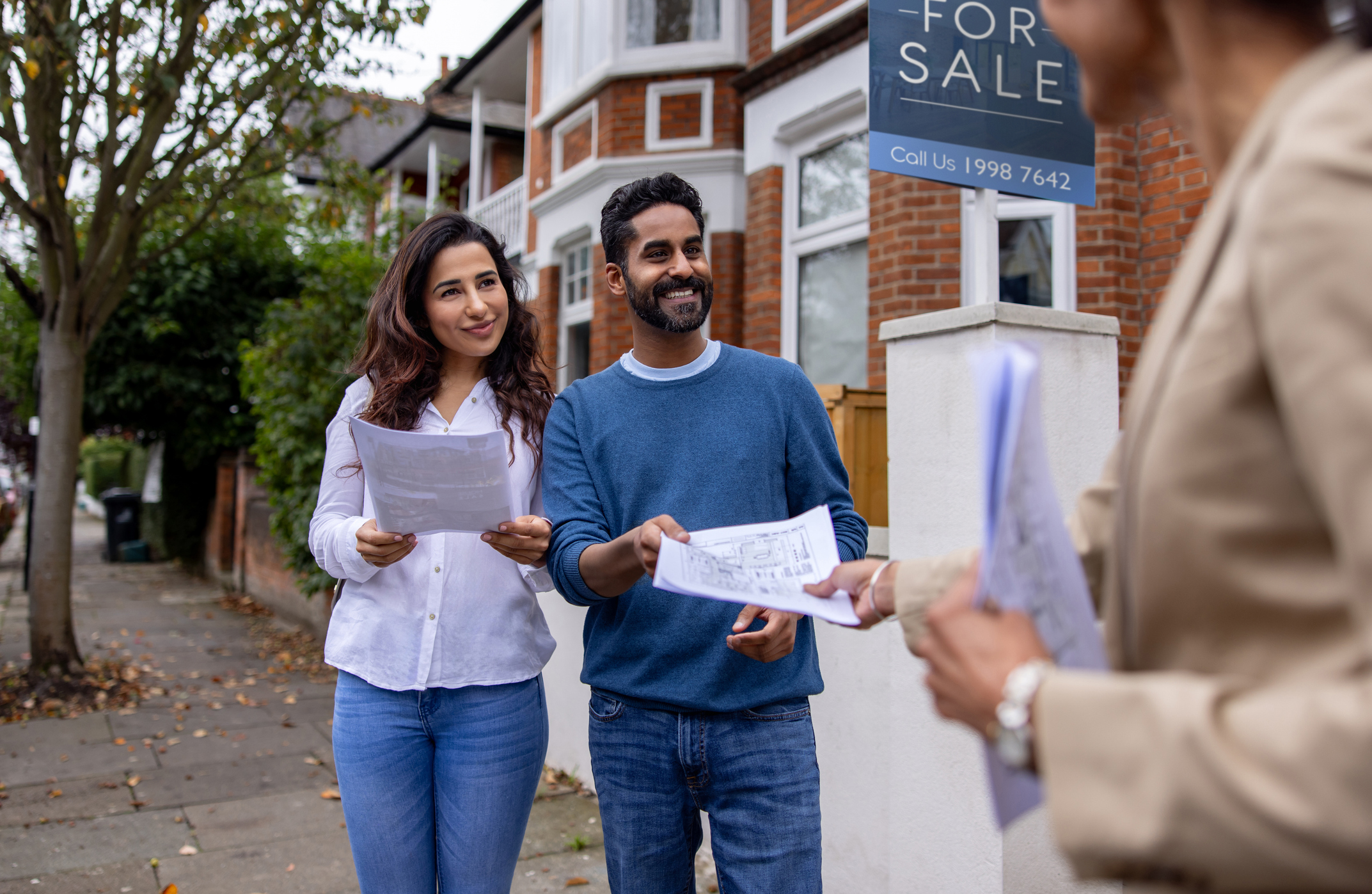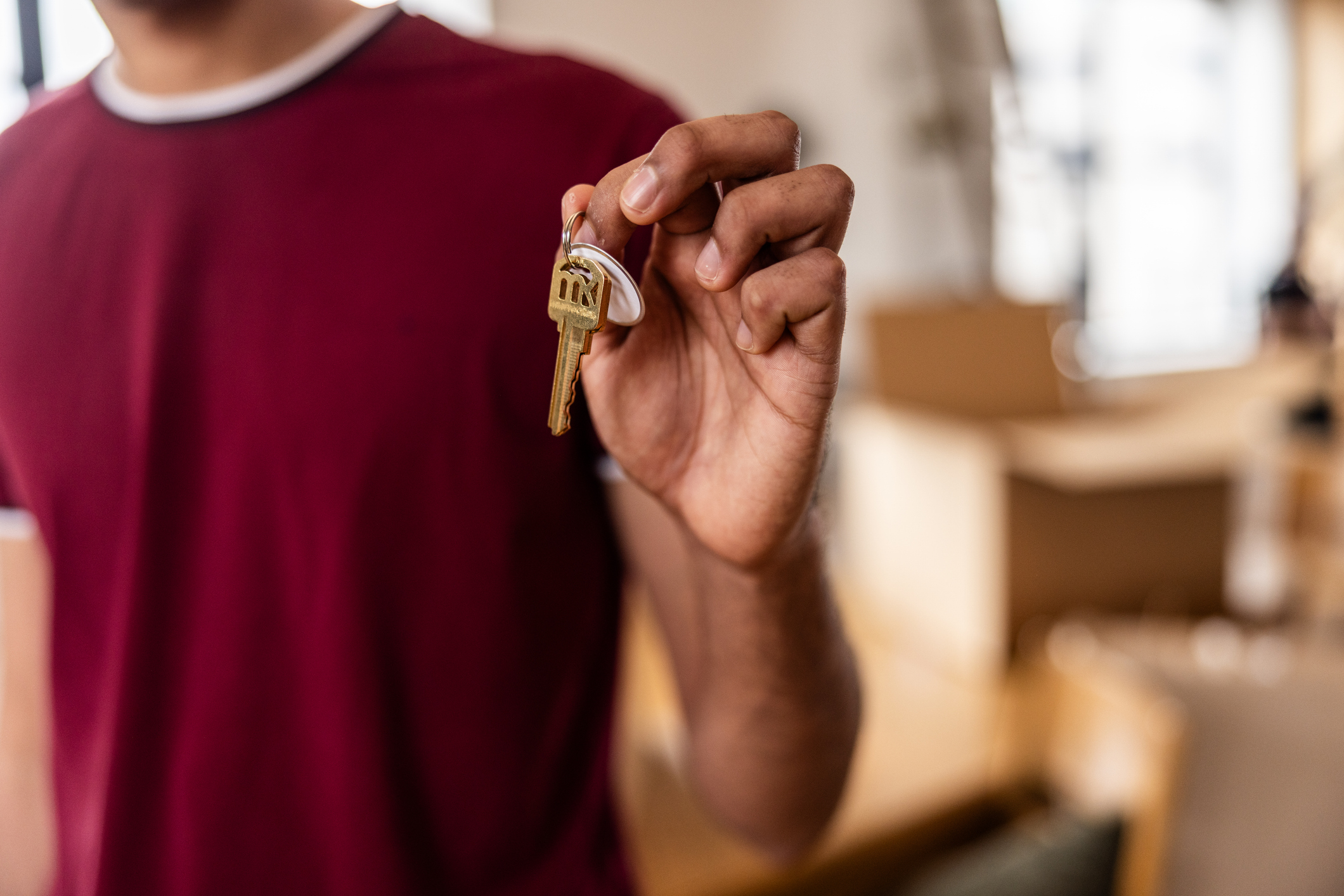First-time buyer market rebounds as interest rates ease and mortgage affordability improves
The average first-time buyer is now 33, and will spend an average of £311,034 on their first property


More than 341,000 first-time buyers stepped onto the property ladder last year, a 19% increase from 2023, according to new research by Halifax.
The analysis also shows that first-time buyers made up 54% of all home purchases last year, the largest majority on record.
The average first-time buyer now puts down an average deposit of 20%, representing around £61,090. This is around £7,500 (+14%) more than in 2023. Meanwhile, the average cost of a first home is £311,034, up 8% from 2023.
MoneyWeek
Subscribe to MoneyWeek today and get your first six magazine issues absolutely FREE

Sign up to Money Morning
Don't miss the latest investment and personal finances news, market analysis, plus money-saving tips with our free twice-daily newsletter
Don't miss the latest investment and personal finances news, market analysis, plus money-saving tips with our free twice-daily newsletter
This rebound is welcome news for the housing market after the number of first-time buyers has slumped since heights of 2021 when 405,250 people bought their first properties. This number decreased by 9% in 2022 and 22% in 2023.
Year | Number of first-time buyers | Annual % change | First-time buyers as % of all home purchase loans |
|---|---|---|---|
2014 | 310,280 | +20% | 46% |
2015 | 298,190 | -4% | 46% |
2016 | 328,490 | +10% | 48% |
2017 | 345,920 | +5% | 49% |
2018 | 353,120 | +2% | 50% |
2019 | 351,260 | -1% | 51% |
2020 | 303,980 | -13% | 50% |
2021 | 405,250 | +33% | 48% |
2022 | 369,870 | -9% | 52% |
2023 | 287,060 | -22% | 53% |
2024 | 341,068 | +19% | 54% |
Source: UK Finance and Halifax estimates for 2024
This growth is reflected in all regions of the UK apart from London. East Anglia and the South West experienced the largest increases, with +22% more first-time buyers than in 2023.
The most affordable place to buy a first property is the North of England, with County Durham topping the list as the average first-time property is just £142,248, over half the UK-wide average. The prices represent just 3.6 times the average salary in the region.
Meanwhile, the least affordable areas in the country are, unsurprisingly, in London and the South East. First-time buyers in Hammersmith and Fulham face average house prices of £622,115 — more than 10 times the average salary.
The new data also shows that the average age of a first-time buyer has increased in the past decade, standing at 33 years old today - in 2014, the average age was just 31.
However, this average fluctuates greatly depending on where properties are being bought in the UK. In the Shetlands Islands, the average first-time buyer is just 27, meanwhile, first-time buyers in Slough and Sutton (South London) are an average of 38 years old.
Many buyers are also coupling up, with almost two thirds of mortgages being in two or more names last year. At the same time, 38% of new buyers bought their first home alone, marking a 1pp increase from last year.
The coupling is not surprising considering the average price of a property for first-time-buyers is now around 6.6 times the average UK salary.
Commenting on the research, Amanda Bryden, head of mortgages at Halifax, said: "Last year saw a big increase in the number of first-time buyers, up almost a fifth from 2023. This likely reflects an improvement in mortgage affordability, as interest rates eased and stabilised, providing more certainty for those stepping on to the ladder.
“Despite the challenges of saving for a deposit and rising house prices — up 8% in 2024 — it's encouraging that first-time buyers still account for more than half of all new mortgages, the biggest majority ever recorded.”
This data comes as changes in the threshold where first-time buyers have to pay stamp duty (a tax on buying properties) will come into effect in the coming months.
Until the end of March, first-time buyers will only need to pay stamp duty on properties over £450,000, but from 1 April this threshold will be reduced to £300,000. That means that the average price of a first home will be over this threshold, making new buyers fork out an extra 2% in tax for the same property.
Tom Bill, head of UK residential research at Knight Frank, said: “With a potential stamp duty saving of more than £6,000 if they act before April, first-time buyers have felt an added sense of urgency in recent months.
“Together with people moving for jobs and schooling, they are among the needs-driven buyers that have increasingly supported demand in the UK housing market as mortgage rates have risen since the Budget.
“While they face affordability pressures, a stock squeeze in the lettings market has kept upwards pressure on rents, which has made buying a more attractive option for some,” he concluded.
Get the latest financial news, insights and expert analysis from our award-winning MoneyWeek team, to help you understand what really matters when it comes to your finances.
Daniel is a financial journalist at MoneyWeek, writing about personal finance, economics, property, politics, and investing.
He is passionate about translating political news and economic data into simple English, and explaining what it means for your wallet.
Daniel joined MoneyWeek in January 2025. He previously worked at The Economist in their Audience team and read history at Emmanuel College, Cambridge, specialising in the history of political thought.
In his free time, he likes reading, walking around Hampstead Heath, and cooking overambitious meals.
-
 RICS: Budget failed to boost property market and recovery unlikely until spring 2026
RICS: Budget failed to boost property market and recovery unlikely until spring 2026Data from the Royal Institution of Chartered Surveyors suggests the Autumn Budget hasn't helped to improve property market sentiment
-
 FCA launching targeted support to help savers with complex financial decisions
FCA launching targeted support to help savers with complex financial decisionsThe regulator wants to help you get to grips with investing and pension planning. Here’s how its new targeted support framework will help you
